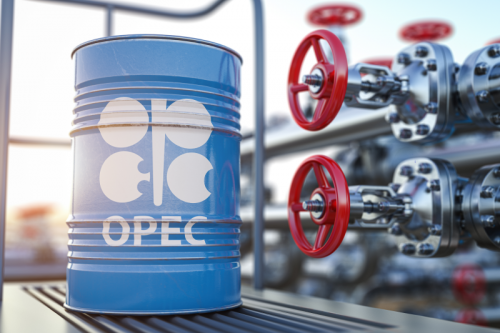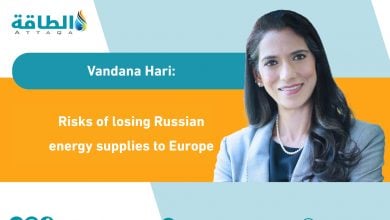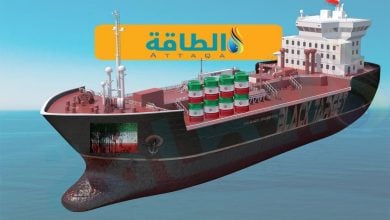
Before OPEC+ meeting, Brent crude futures hit one-month highs on Monday, August 29, extending a week-long rally driven by supply concerns but succumbed to renewed demand worries and shed a cumulative 12% over the rest of the week, ending at $93.02/barrel on Friday.
Though the level is close to a floor the OPEC/non-OPEC alliance might want to defend, the time is not ripe for a production cut.
The physical market is likely tighter than what the paper market has been indicating and though fears of demand reduction in a global recessionary environment are valid, there are already plenty of pressure points on the supply side of the equation.
The OPEC/non-OPEC Joint Technical Committee, which met on Wednesday to review market conditions ahead of the energy ministers’ meeting on September 5, halved its estimated 2022 global oil supply-demand balance from a month ago to an average surplus of 400,000 b/d.
It also flipped the outlook for 2023 from a surplus of 900,000 b/d to an average deficit of 300,000 b/d.
OPEC+ targets and actual production
The shift was attributed to a change in methodology, with the technocrats accounting for the probability that most OPEC+ members will continue pumping below their quotas in the coming months.
The yawning gap between OPEC+ targets and actual production – estimated at 2.9 million b/d in July – is reason enough for the producers to side-step the option of cutting production at Monday’s meeting even if Brent is hovering close to their pain threshold.
The JTC expressed support for Saudi Energy Minister Abdulaziz bin Salman’s declaration of August 22 that OPEC+ stood ready to cut production if needed to resolve a growing disconnect between the physical and paper markets.
Though a few key OPEC+ ministers have already backed ABS’ sentiments in public, a formal endorsement of the idea, with members pledging commitment to curtail production if needed, could help stave off speculative short-selling.

At some point, in order to set effective policies, OPEC+ will need to deal with the elephant in the room — the continuing inability of most members to ramp up output to their quotas.
For the time being, OPEC+ would do well to save its firepower to deal with a potential return of sanctioned Iranian barrels to the market and a secular global oil demand downturn, when it actually appears on the radar.
RUSSIA PRICE CAP PLAN IS SERVED UP HALF-BAKED
Russia may not be able to afford to carry out its threat of refusing to sell oil to countries that join the G7-EU coalition to impose a price cap on its exports.
But there are other hurdles the plan, agreed on Friday by the finance ministers of the Group of Seven countries -- Canada, France, Germany, Italy, Japan, the UK and the US -- must overcome.
China and India, the main buyers of crude that is being turned away by the EU, remain non-committal. The two importing giants have together ramped up Russian crude purchases by a little over 1 million b/d in recent months, versus February.
Turkey has doubled its imports of Russian Urals and Siberian Light grades this year to more than 200,000 b/d versus 2021, according to Refinitiv data. Myanmar and Sri Lanka, though relatively small importers, are also looking to buy Russian oil.
The US argument, that a ban by the EU and allied countries on the companies providing financing, insurance and other services for Russian oil shipments to third countries from December 5 may push up crude prices, does not seem to have broad acceptance across the globe.
The politically-driven price cap effort, the first of its kind, appears to have no grounding in the practicalities of the global oil markets.
What the price caps will be for each of Russia’s crude grades and refined products (which are also expected to be included in the plan), who will set them and how they will be adjusted in line with changes in the spot market are all important details that still need to be thrashed out.
Russia’s benchmark Urals crude grade has been trading around $20-25/barrel discount to Brent in Europe, having recovered from levels in the $30s/barrel in April- June, as European refiners have stepped up their purchases in recent weeks.
The need to amend the European sanctions package
Meanwhile, the EU countries will need to amend their sixth package of sanctions against Russia, adopted at the beginning of June, to exempt the ban on shipping services due to kick in from December 5 for cargoes sold below the price cap, as envisaged by the plan.
That may prove to be an arduous and time-consuming process, given the challenges the 27 member countries faced in agreeing to the sanctions package in the first place, in the face of conflicting national interests.
The G7 countries insure over 90% of global shipping traffic, according to German think tank Bruegel.
China and India may be able to make their own shipping insurance arrangements for Russian oil if the big European protection and indemnity clubs pull out. The countries are accustomed to such shifts from their experience buying Iranian oil under the Western sanctions regime.
Vandana Hari is Founder and CEO of Vanda Insights, which provides macro-analysis of the global oil markets.
READ MORE...
- The fanciful goals of Green New Deal are nowhere in sight (Article)
- oil prices continues to be led by daily shifts in mood (Article)
- OPEC+ turns protective of limited spare capacity (Article)
- Russian Invasion of Ukraine accelerates higher fuel and electricity prices (Article)
- The Iranian gas dues problem and resupplying Iraq and Turkey (Article)








